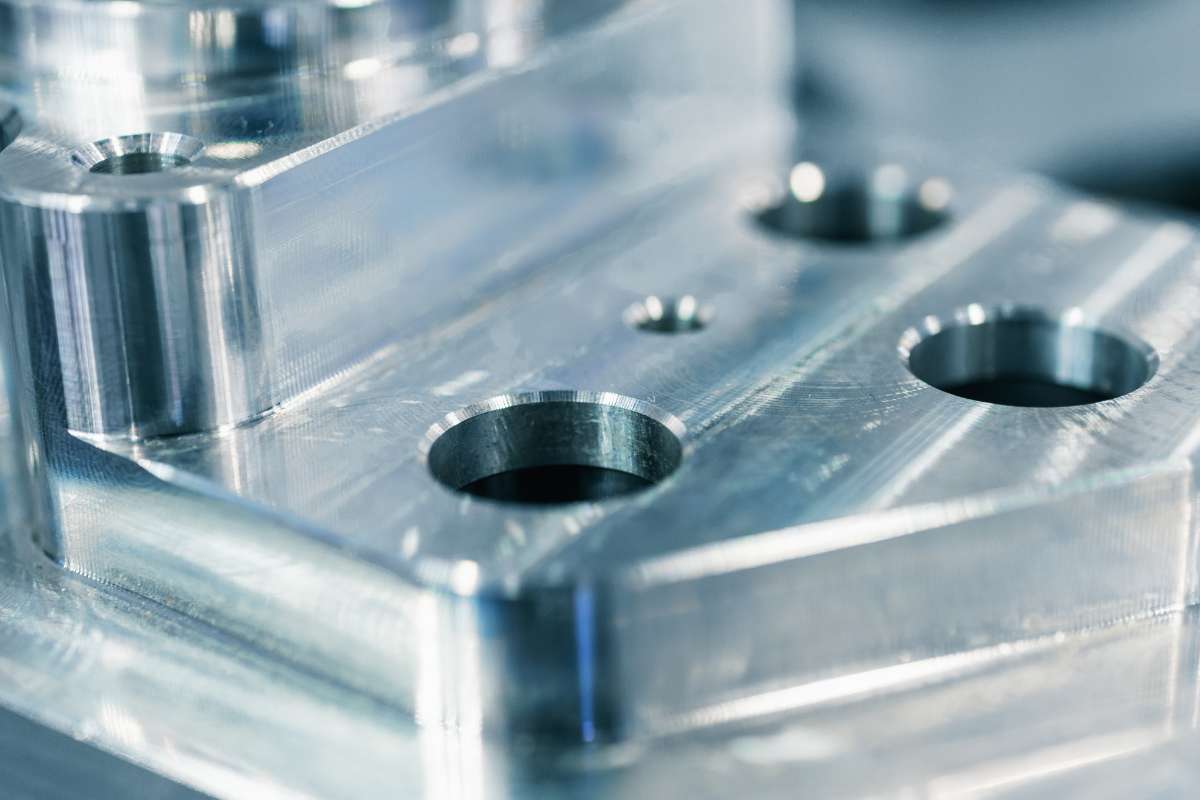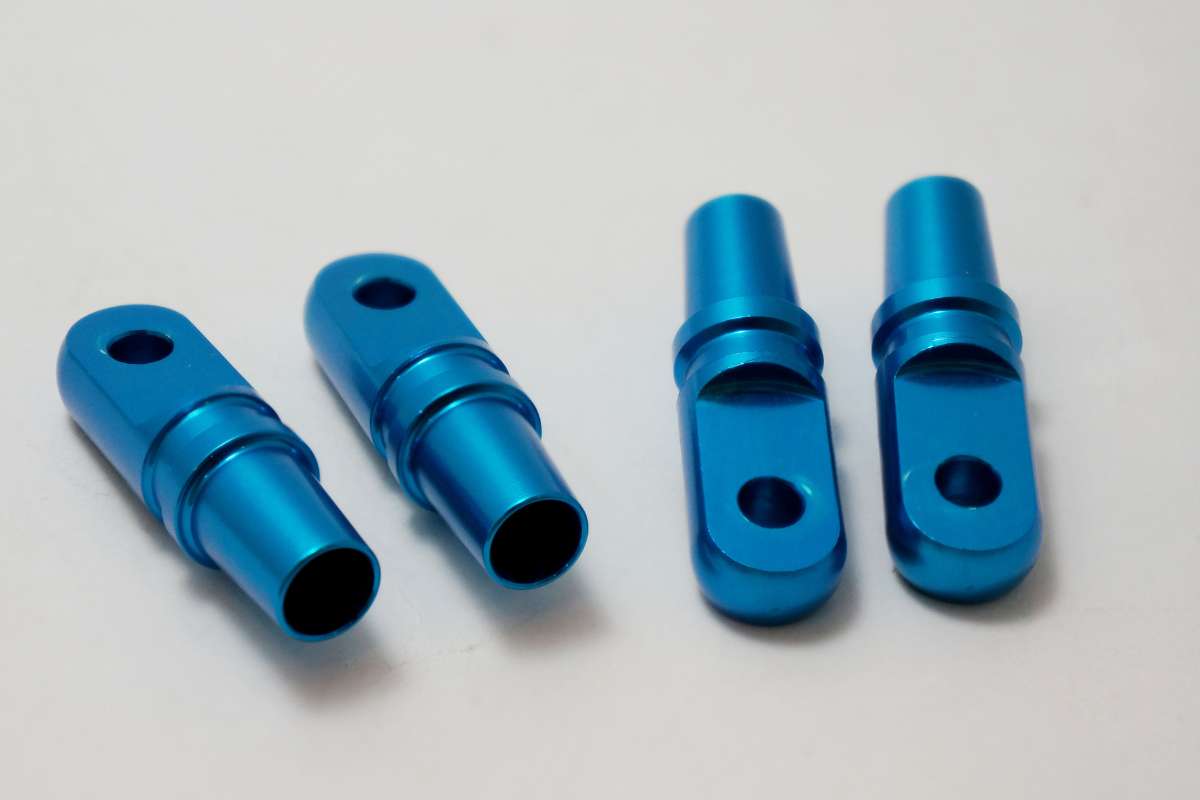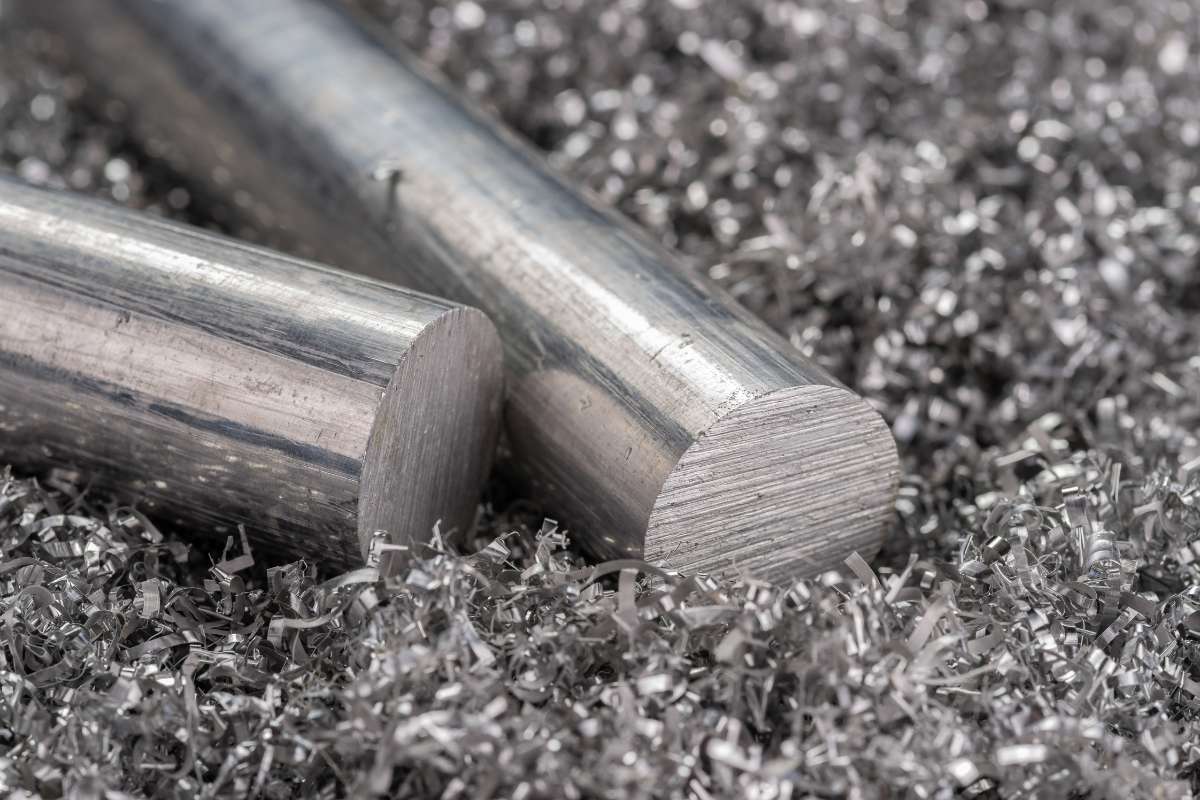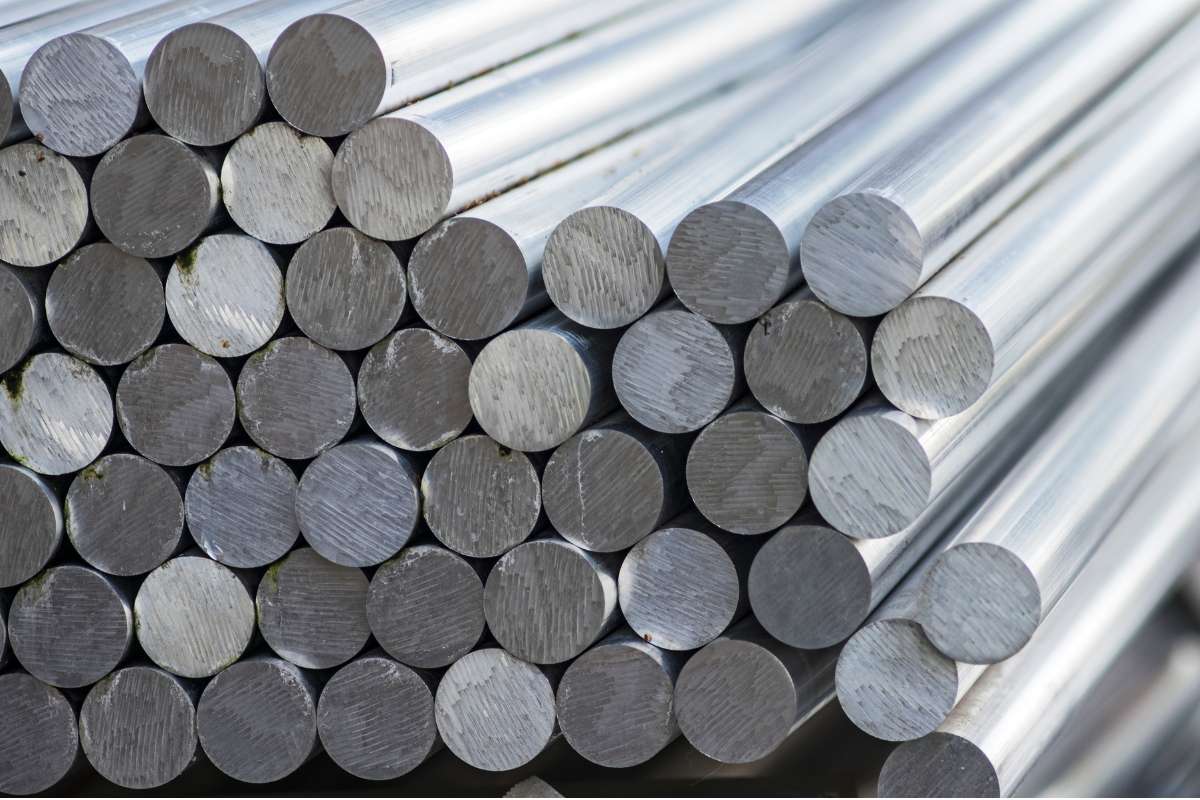How to Use Aluminum A356 T6 for Best Results?
This blog helps you learn about A356 T6. We’ll discuss its uses in cars, planes, and gadgets. Engineers use A356 T6 aluminum for strong, light parts. It’s good for pistons, turbine blades, and propellers.
We’ll cover its benefits, like strength and corrosion resistance. Learn how A356 T6 aluminum alloys improves many industries.
What is A356 T6?
A356 T6 is a special aluminum alloy. It has silicon content of 7%. This makes it good for casting. The alloy’s strength comes from its heat treatment. This process makes it T6 temper.
It also improves its mechanical properties. The T6 temper gives better hardness. It increases the tensile strength. The alloy’s composition includes magnesium. Magnesium content is 0.3%.
This helps in corrosion resistance. A356 T6 is used in many industries. It’s important for automotive parts. They use it for its lightweight and strength.
What are the Key Properties of A356 T6 Aluminum Alloy?
Composition
A356 T6 aluminum alloy has silicon at 7%. It also contains 0.3% magnesium. This makes it strong. The alloy’s composition gives it good castability. It also helps in reducing porosity.
Silicon improves fluidity. Magnesium increases strength. The alloy’s composition also includes iron. Iron content is 0.2%. This helps in reducing cracking. A356 T6 is used in many applications. It is lightweight and strong. These properties make it very useful.
Tensile Strength
A356 T6 has high tensile strength. Its tensile strength is 230 MPa. This makes it suitable for load-bearing parts. The strength comes from its heat treatment. The T6 temper increases its strength.
This makes the alloy durable. The high strength helps in making strong parts. It is used in automotive and aerospace. These industries need strong materials. A356 T6 provides the needed strength.
Thermal Conductivity
A356 T6 has good thermal conductivity. It has a value of 150 W/m•K. This helps in heat dissipation. The alloy is used in heat sinks. Good thermal conductivity makes it useful.
It prevents overheating of parts. The alloy is also used in engines. It helps in cooling engine components. The thermal properties make it versatile. A356 T6 is important in many industries.
Corrosion Resistance
A356 T6 has good corrosion resistance. Magnesium in the alloy helps. This makes it resistant to rust. The alloy is used in marine environments. It prevents parts from corroding.
The corrosion resistance increases durability. It also reduces maintenance. A356 T6 is used in harsh environments. It can withstand exposure to water. This property makes it reliable.
Hardness
A356 aluminum die casting has high hardness. The hardness value is 75 HB. This makes it wear-resistant. The hardness comes from the T6 temper. The heat treatment increases hardness.
This makes the alloy durable. Hardness helps in making strong parts. It is used in automotive components. These parts need to be hard and strong. A356 T6 provides the needed hardness.
| Property | A356 T6 Aluminum Alloy | A360 Aluminum Alloy | A380 Aluminum Alloy | 6061 Aluminum Alloy | 7075 Aluminum Alloy | 2024 Aluminum Alloy |
| Composition | Si: 7.0%, Mg: 0.3%, Al: 92.7% | Si: 9.5%, Mg: 0.5%, Al: 90% | Si: 8.0%, Cu: 3.0%, Al: 89% | Mg: 1.0%, Si: 0.6%, Al: 98.4% | Zn: 5.6%, Mg: 2.5%, Al: 91.9% | Cu: 4.4%, Mg: 1.5%, Al: 94.1% |
| Tensile Strength | 310 MPa | 280 MPa | 325 MPa | 310 MPa | 572 MPa | 470 MPa |
| Thermal Conductivity | 151 W/m·K | 96 W/m·K | 96 W/m·K | 167 W/m·K | 130 W/m·K | 121 W/m·K |
| Corrosion Resistance | Excellent | Good | Good | Excellent | Good | Fair |
| Hardness | 75 HRB | 80 HRB | 85 HRB | 95 HRB | 150 HRB | 120 HRB |
| Density | 2.68 g/cm³ | 2.66 g/cm³ | 2.70 g/cm³ | 2.70 g/cm³ | 2.81 g/cm³ | 2.78 g/cm³ |
Table on What are the Key Properties of A356 T6 Aluminum Alloy!
How to Prepare A356 T6 for Machining?
Pre-machining Treatment
Begin by washing the A356 T6 alloy. Wash out any build up of dirt or oil. To get the best results ensure that you use a degreaser. The next step is to heat treat the alloy. This makes it easier to machine.
Melt the alloy to a set temperature. This process is known as annealing. It softens the metal. Annealing improves machinability. Now, let the alloy cool gradually. The slow cooling also assists in reduction of stress.
Tool Selection
Select the appropriate tools for machining. When machining A356 T6, it is recommended to use carbide tools. They are tough and rigid. Carbide tools last longer. They also provide a smooth finish. Choose tools that possess a cutting edge.
Therefore, sharp tools minimize the amount of force needed to cut through the material. This prevents tool wear. The geometry of the tool is relevant. Select tools with a favorable rake angle. This shows that positive rake angles are beneficial in increasing the efficiency of the cutting process.
Coolant Usage
Employ the use of coolants to reduce the temperature of the alloy. Coolants prevent overheating. They also reduce friction. Use coolant on the area where the cut is to be made. For the best results use water base coolants. These coolants are effective. They help to maintain low temperatures.
Coolants also aid in washing away chips. This prevents chip buildup. Utilize a high flow rate for the coolant. High flow provides adequate flow rates needed in cooling.
Cutting Speed
Adjust the cutting speed properly. This is true that cutting speed plays a vital role in tool life. For A356 T6, use a moderate speed. Excessive speeds may lead to increased wear on the tool. That is why low speed results in poor finish. Start with a speed of 150 m/min. Adjust as needed.
Monitor the cutting process. Make sure that the speed is as good as it can be. Optimal cutting speeds make operations efficient. It also increases tool life.
Feed Rate
Feed rate refers to the speed at which the tool moves. Establish an appropriate feed rate for A356 T6. It is recommended to set a feed rate of 0.15 mm/rev. This gives a good balance. High feed rate has a negative effect on tool wear. When feed rate is low, the efficiency is hampered.
Feed rate should also be adjusted if necessary. Monitor the machining process. Make sure that the feed rate is at optimal levels. From the above results, it was observed that an optimum feed rate enhances the surface finish.
Chip Formation
Focus on chip formation. Chips carry away heat. Cooling is enhanced by good chip formation. Tools should be sharp to create small chips. Small chips are more manageable. They reduce tool wear. Failure to form proper chips leads to clogging. This improves machining efficiency.
Monitor the chip size. Adjust parameters as needed. The management of chips is very important. It ensures smooth machining.
What are the Best Machining Techniques for A356 T6?
CNC Milling
CNC Milling is suitable with A356 T6. It provides precision. It involves the use of computer controls in the process. Ensure that the CNC machine is positioned correctly. Use appropriate milling tools.
Sharp tools help in giving a smooth finish. Feed at a moderate rate. This prevents tool wear. Monitor the cutting speed. Make sure it is not too high. High speed may result to heat buildup. CNC milling has the ability of producing accurate parts.
Drilling
Drilling is another technique. For A356 T6, use carbide drills. They are strong they are also very durable. Begin with a pilot hole. This guides the drill. Apply steady pressure. Avoid too much force.
Applying too much force may also lead to breakage. Use coolant during drilling. Coolant helps to cool the drill. It also removes chips. Proper drilling provides clean holes. This is crucial for assembly.
Surface Finishing
Surface finishing helps to improve looks. It also improves performance. A356 cast aluminum starts with rough grinding. Use abrasive wheels. They remove surface imperfections. Follow with fine grinding.
Apply a final polish. Use polishing compounds. They provide a glossy look. Coating is also a part of surface finishing. Apply protective coatings. They prevent corrosion. This in turn increases the life of the part.
Tool Path
Plan the tool path properly. They influence the machining results. Use CAM software. It helps in planning. Ensure that the tool path is clearly defined. Avoid abrupt changes. Consequently, smooth paths decrease tool wear. They also offer a smooth surface which is more appealing to the eye.
Seek the most efficient route. This reduces machining time. The tool path planning is critical here. It ensures consistent results.
Feed Optimization
Make feed rate optimal. This improves machining efficiency. Begin with the baseline feed rate. Adjust as needed. High feed rate leads to faster material removal. It also increases tool wear.
Reducing the feed rate will result in finer finish. Monitor the machining process. It is advisable to adjust the feed rate appropriately. It is a fact that the feed rate has a direct relationship with speed as well as the quality of the object that is being built. It also extends tool life.
Spindle Speed
Choose the right spindle speed. It affects cutting performance. For A356 T6, use a moderate speed. High speed leads to heating. For instance, low speed can contribute to poor finish.
First, maintain a speed of 1500 RPM. Adjust as needed. Monitor the spindle temperature. Ensure it stays cool. Correct spindle speed enhances productivity. It also increases tool life.
Lubrication
Lubrication plays an important role in the process of machining. It reduces friction. Coat the cutting area with the lubricant. For better performance always opt for oil-based lubricants.
They provide better cooling. Lubrication also reduces tool wear. It improves surface finish. Ensure continuous lubrication. This prevents overheating. Proper lubrication enhances machining. It ensures smooth operation.
How to Optimize Casting Processes with A356 T6?
Mold Preparation
First, make sure that the mold is properly prepared. Scrub it well to get rid of the dirt. Use mold release agent to avoid food sticking. Ensure that the mold is well positioned. This ensures uniform casting. Check the mold for any imperfections. Before casting, make sure that all problems are solved.
Preparation of the mold is therefore very important. It leads to improved quality of the parts manufactured. Molds that are clean and well prepared tend to increase efficiency.
Temperature Control
Control the temperature precisely. Preheat the A356 T6 alloy to the right temperature. You should use a thermometer to measure it. Make sure the temperature is constant throughout the process.
Do not overheat the substrate as it may results into defects. Temperature control is an important factor to ensure that the materials have good fluidity. It also has the effect of decreasing the probability of porosity. This is because, when the temperature is consistent, then the casting quality is good.
Uniform Cooling
Cool the castings uniformly. They should also follow the process of slow cooling. This implies that rapid cooling can lead to crack formation. This is prevented by slow, even cooling. Establish a cooling system to control the process. Ensure that you keep track of the cooling rate.
Make sure that the castings cool at a uniform rate. Equal cooling minimizes internal stress. It also increases mechanical properties.
Defect Prevention
Focus on preventing defects. Inspect the castings regularly. Search for typical problems such as cracks or porosity. This means that if there are signs of defects in the process, then an adjustment must be made. Use quality raw materials. Proper handling reduces contamination.
Maintain clean equipment. Preventive maintenance keeps issues from arising unexpectedly. It is notable that defect prevention plays an important role in achieving high quality of the castings. It also reduces waste and the need to repeat work that has already been done.
Mold Release Agent
It is recommended to use mold release agent before casting. This assists in easy removal of castings. Choose the type of release agent that is of good quality. It should be compatible with A356 T6.
Ensure the mold is evenly coated with the spray. Make sure you cover all the regions. This prevents sticking. Appropriate use of the release agent also reduces time. It also safeguards the mold itself.
How to Achieve the Best Mechanical Properties with Aluminum A356 T6?
Heat Treatment
A furnace heats A356 T6 to 540°C. This increases its hardness. Next, the alloy gets quenched. This fast cooling locks in strength. Then, it undergoes aging. The process makes the metal tough.
Adding silicon helps improve castability. The mix includes magnesium for better strength. Stirring the melt ensures even properties. This step is crucial. After aging, mechanical properties get tested.
The Rockwell hardness test checks its strength. Small samples ensure quality. These steps make A356 T6 strong.
Quenching
After heat treatment, quenching cools A356 T6 rapidly. This process traps the metal’s strength. Water baths often quench parts quickly. Then, parts are dried to prevent rust. Fast cooling locks in hardness. Silicon particles improve the alloy’s durability. Engineers monitor the cooling rate.
Uniform cooling prevents cracks. Parts are then inspected. Hardness tests follow quenching. Engineers ensure consistent quality. Different alloys need specific quenching techniques. Quenching boosts A356 T6’s mechanical properties. This step is vital.
Aging
Post-quenching, aging enhances A356 T6. Heated to 155°C, the metal’s properties improve. Time and temperature matter. Precision timing avoids over-aging. Aging strengthens the alloy. Silicon content influences hardness. The process involves holding at constant heat. Engineers monitor each batch.
Aging changes the metal’s microstructure. Proper aging increases toughness. Controlled environments ensure even treatment. After aging, hardness tests follow. This confirms the desired properties. Accurate aging makes A356 T6 reliable. The metal becomes durable.
Stress Relief
Stress relief helps A356 T6 stay strong. Heat it to 200°C. This relaxes internal stresses. Uneven cooling creates stress. Stress relief smooths the structure. Engineers ensure slow, even cooling.
This avoids new stress. Silicon particles help the process. Proper timing is crucial. Controlled heat improves results. Afterward, tests confirm stress levels. Checking the parts ensures quality. Stress relief boosts durability. It’s an essential step for A356 T6.
Tempering
Tempering involves reheating A356 T6. Heat it to 170°C. This improves flexibility. The process balances strength and toughness. Engineers monitor the temperature. Precision avoids over-tempering. Silicon helps maintain structure. After tempering, the metal cools slowly.
Tests confirm the properties. The process changes the microstructure. Proper tempering ensures durability. Tempering gives A356 T6 its final properties. This step completes the treatment. Accurate tempering is key.
What Are the Applications of A356 T6 in Different Industries?
Automotive
Cars use A356 T6 for engine parts. Pistons made of A356 T6 are strong. Connecting rods benefit from its durability. Valve covers use this metal too. It makes them lightweight. Engineers like A356 T6 for its strength. Aluminum parts improve fuel efficiency. Parts stay strong under high heat.
Castings make precise shapes. Wheels also use this metal. Cars need strong, light parts. This helps them go faster.
Aerospace
Planes need strong, light parts. A356 T6 is perfect. Engine components use this alloy. Turbine blades benefit from it. Frames made of A356 T6 are tough. This metal resists corrosion.
Lightweight parts help planes fly. Engineers choose A356 T6 for safety. Wing sections use this alloy. It withstands high pressure. Rivets and bolts use it too. Precision casting ensures quality. This alloy keeps planes safe.
Consumer Electronics
Gadgets need strong cases. A356 T6 is great for this. Phones use it for frames. Tablets have parts made of it. This metal is light. Engineers love its strength. Heat sinks in computers use it.
This keeps them cool. Keyboards have aluminum parts. A356 T6 makes them durable. Speakers use this metal too. Casting creates exact shapes. Gadgets stay safe and last long.
General Manufacturing
Machines need strong parts. A356 T6 is perfect. Gears use this metal. It’s strong and light. Engineers pick it for durability. Robots have parts made of it. Precision casting helps. This metal resists wear.
Bearings use A356 T6. It reduces friction. Pumps benefit from its strength. Manufacturing tools use it too. This metal ensures quality. Machines work better with A356 T6.
Marine
Boats need tough parts. A356 T6 is ideal. Propellers use this alloy. It resists corrosion. Hulls made of A356 T6 are strong. Lightweight parts help boats move. Engineers prefer this metal. It’s durable.
Deck fittings use it too. Casting creates precise shapes. This metal withstands saltwater. Railing and ladders use it. A356 T6 ensures safety. Boats stay strong in the sea.
Conclusion
A356 T6 is vital in many fields. Strong pistons, durable turbine blades, and sturdy propellers use it. Learn more at ALUDIECASTING. Engineers like A356 T6 for its strength and light weight. It helps in making better cars, planes, and boats. This metal is key for strong, reliable parts.
If you have a project that need A356 T6 aluminum die casting, you are welcome to ALUDIECASTING, we are one of the top 10 aluminum die casting manufacturers in China, we offer any custom die casting according to your requirement. contact us for quote.









0 Comments